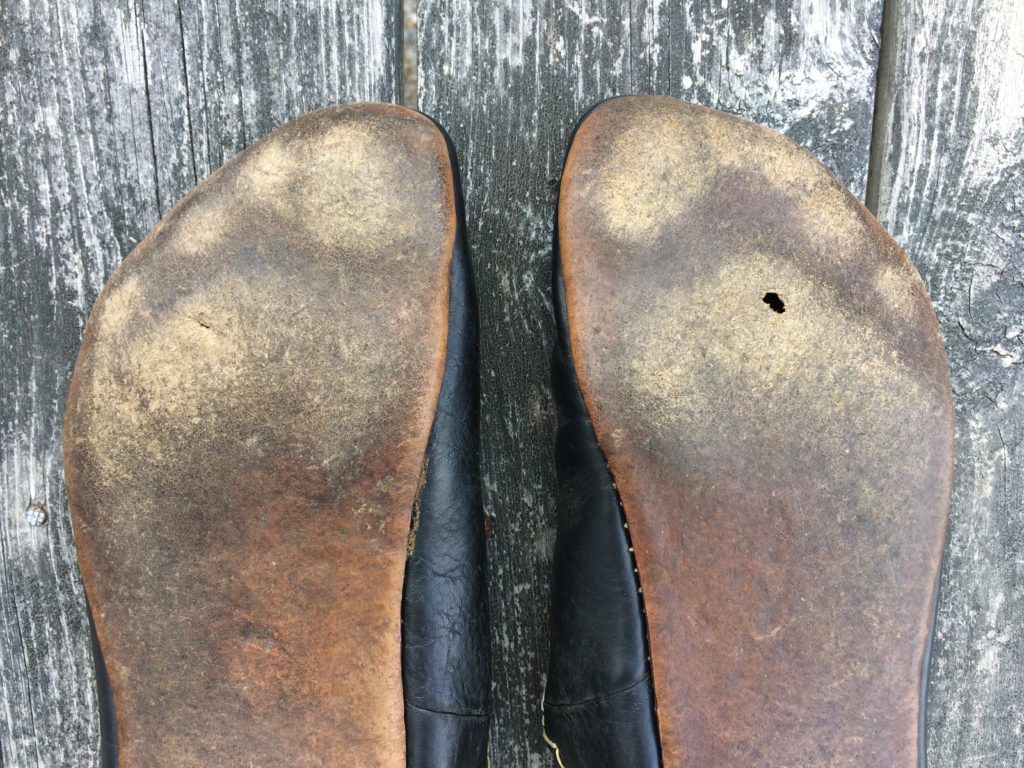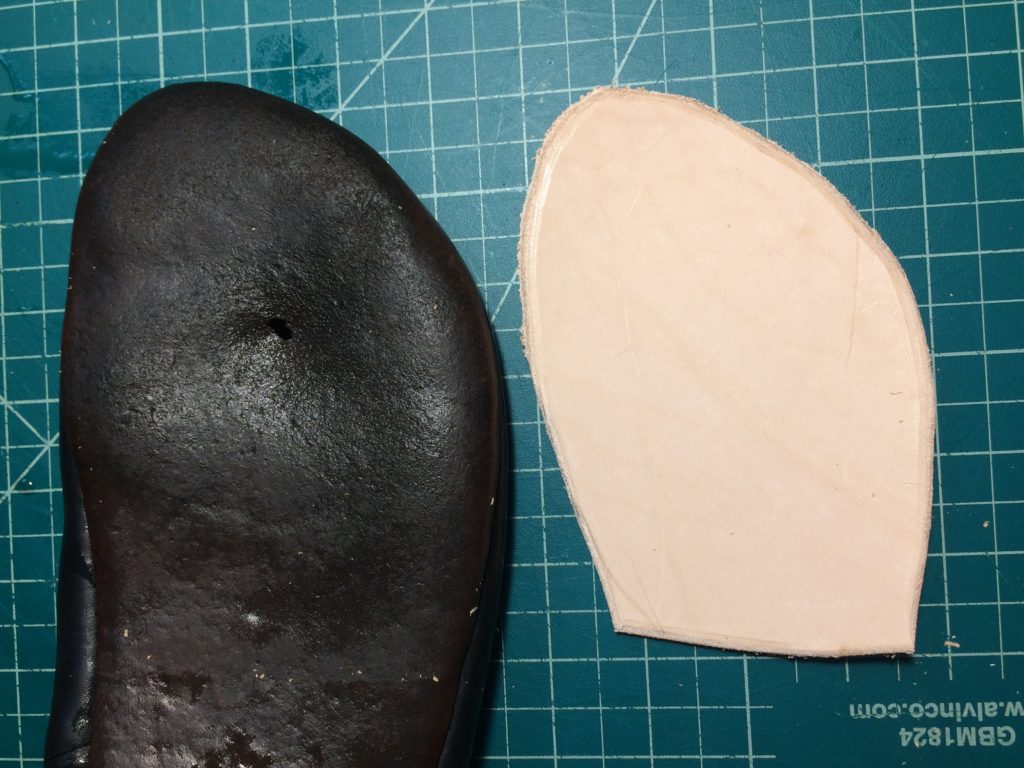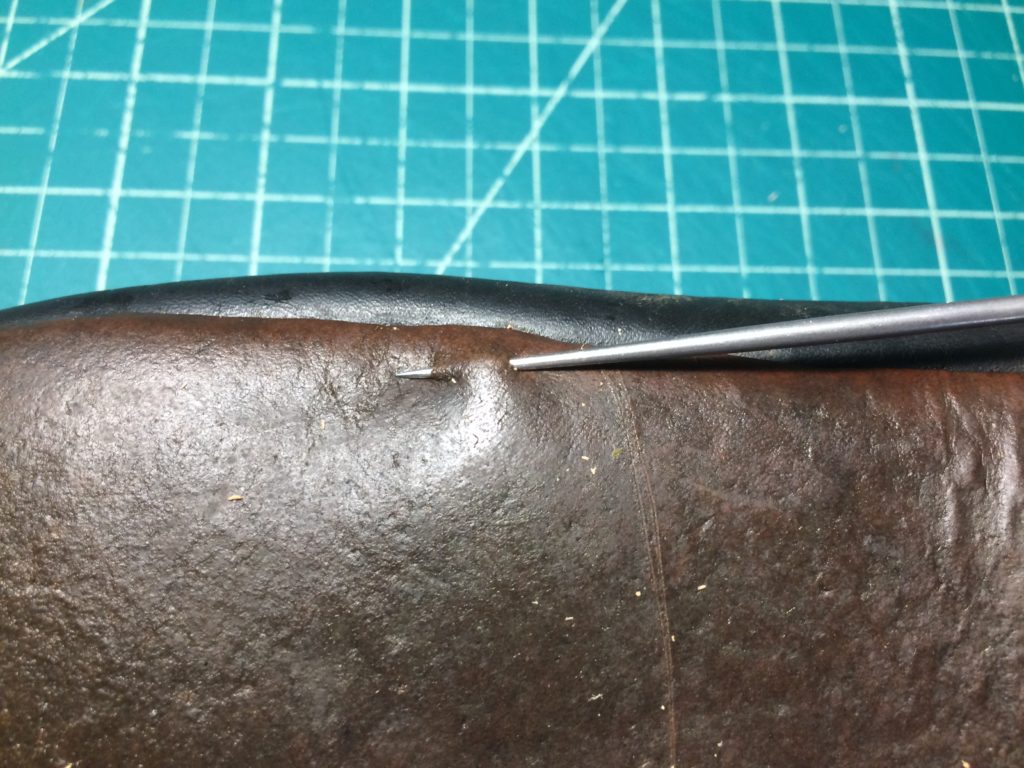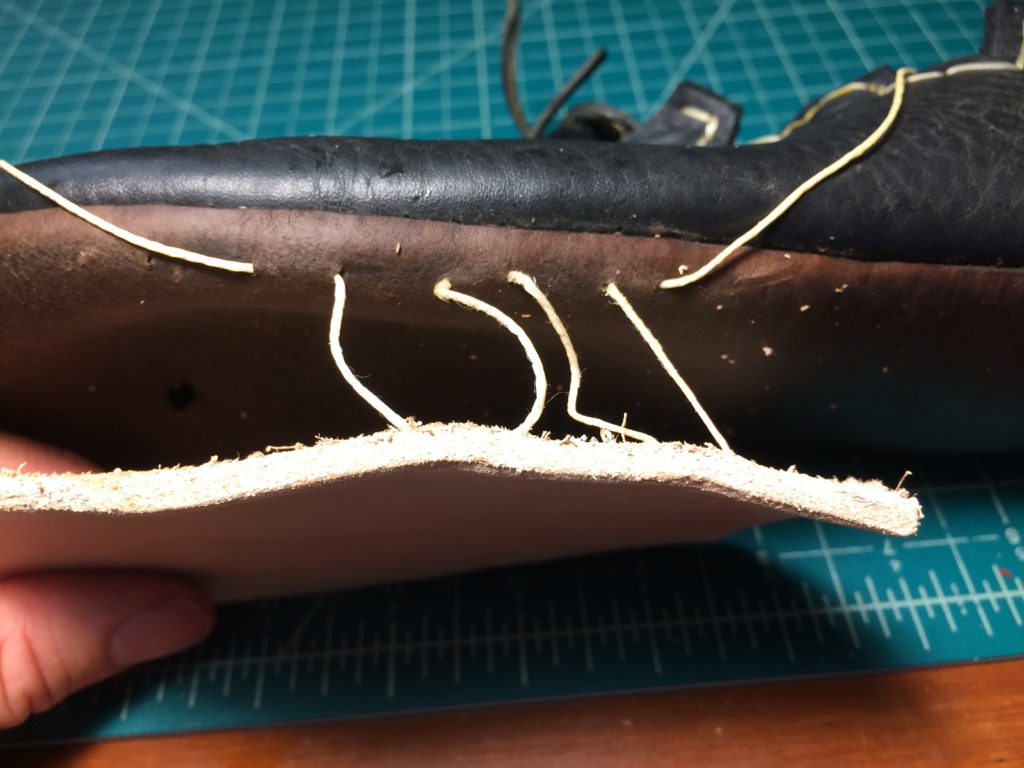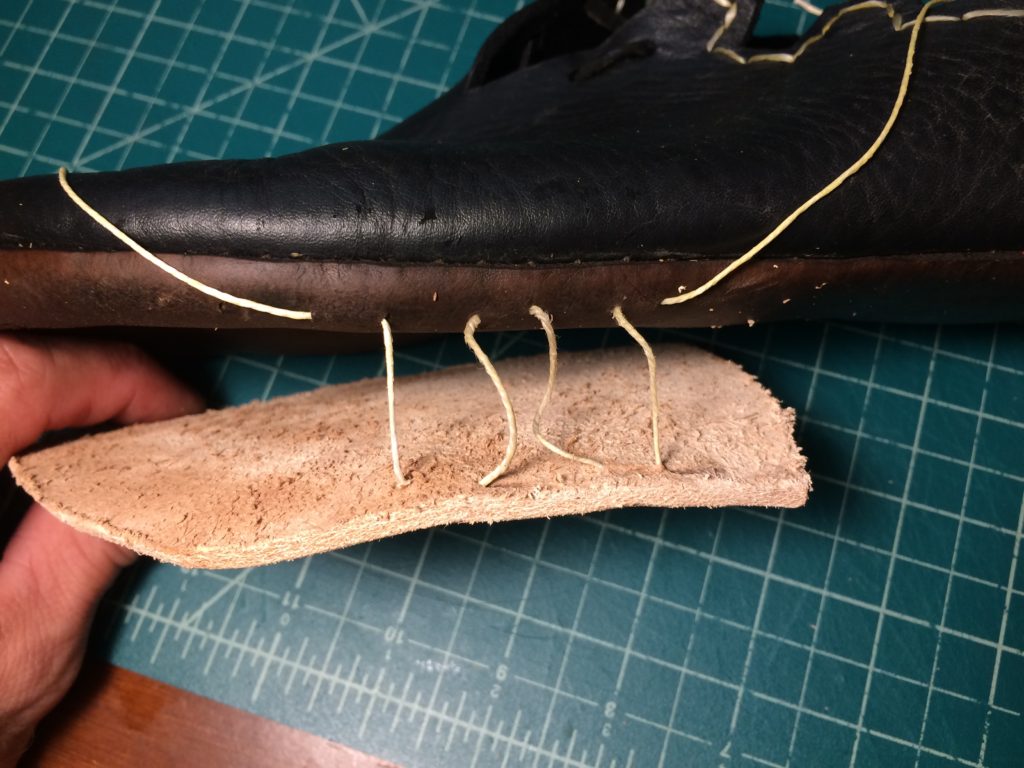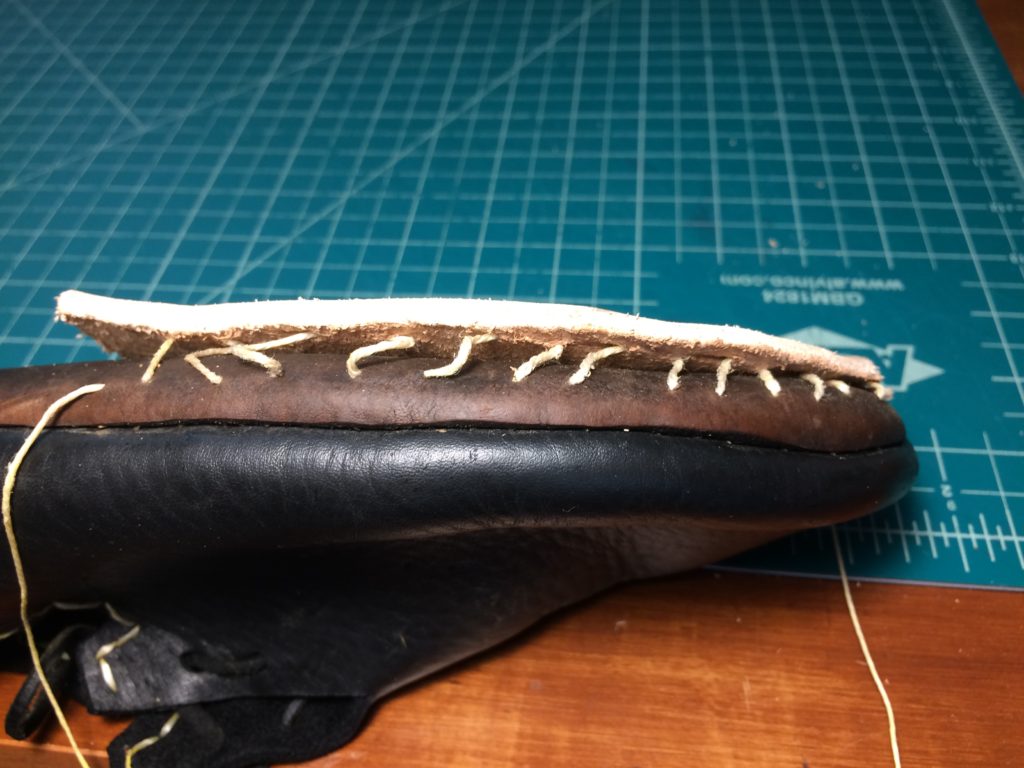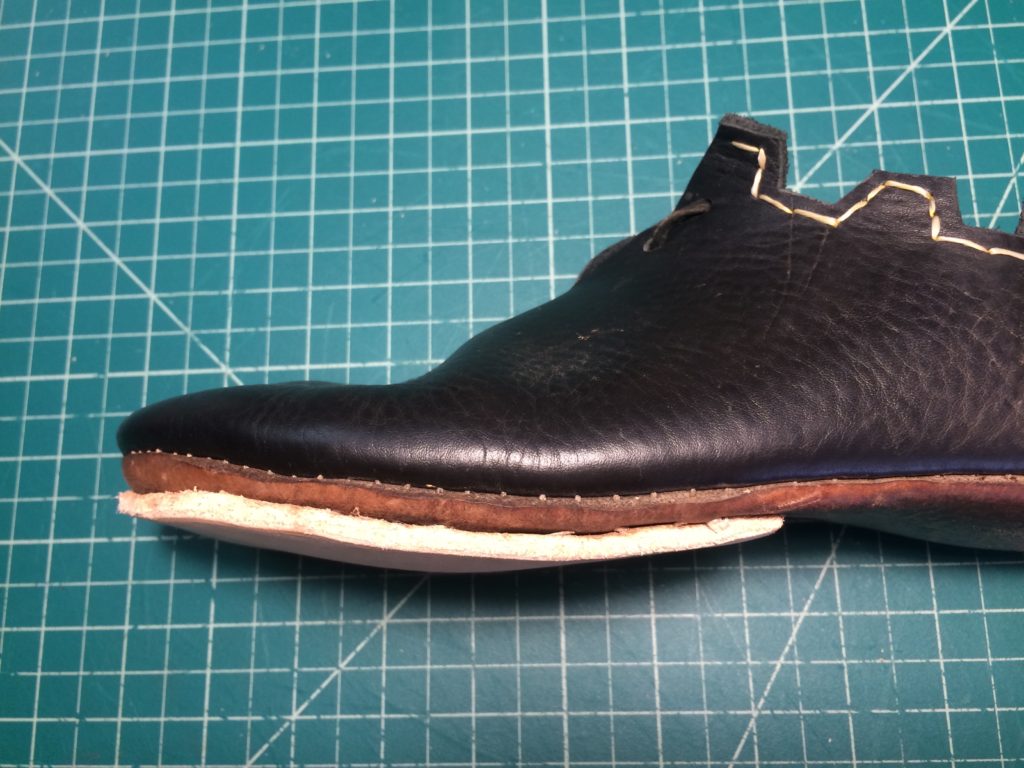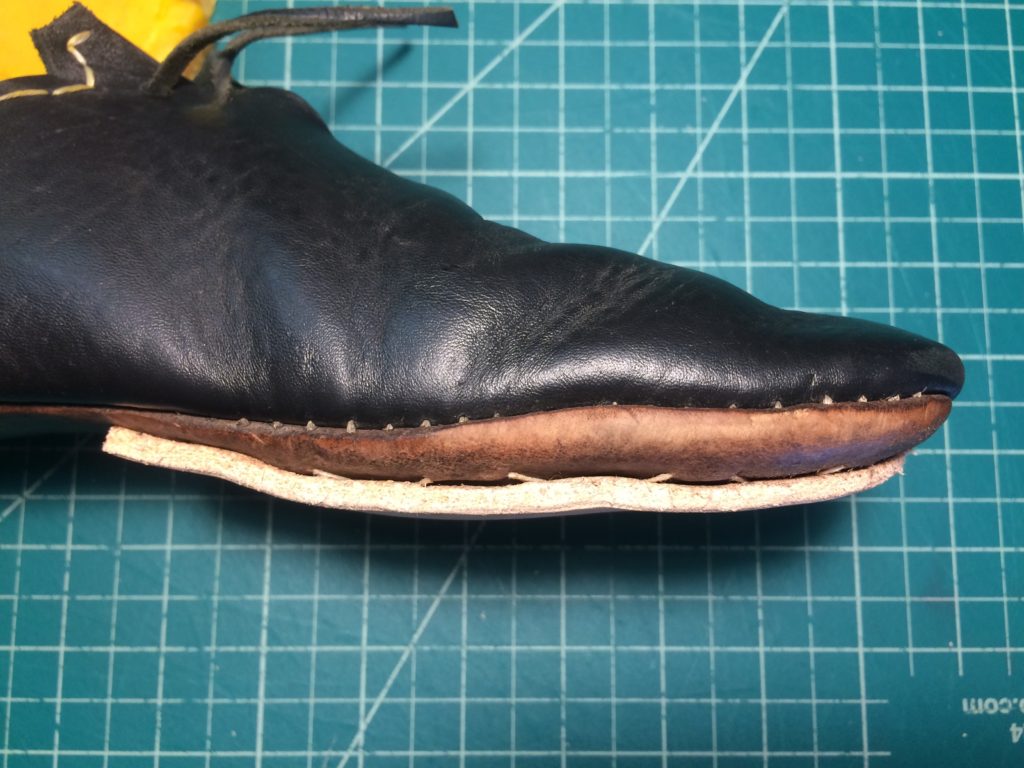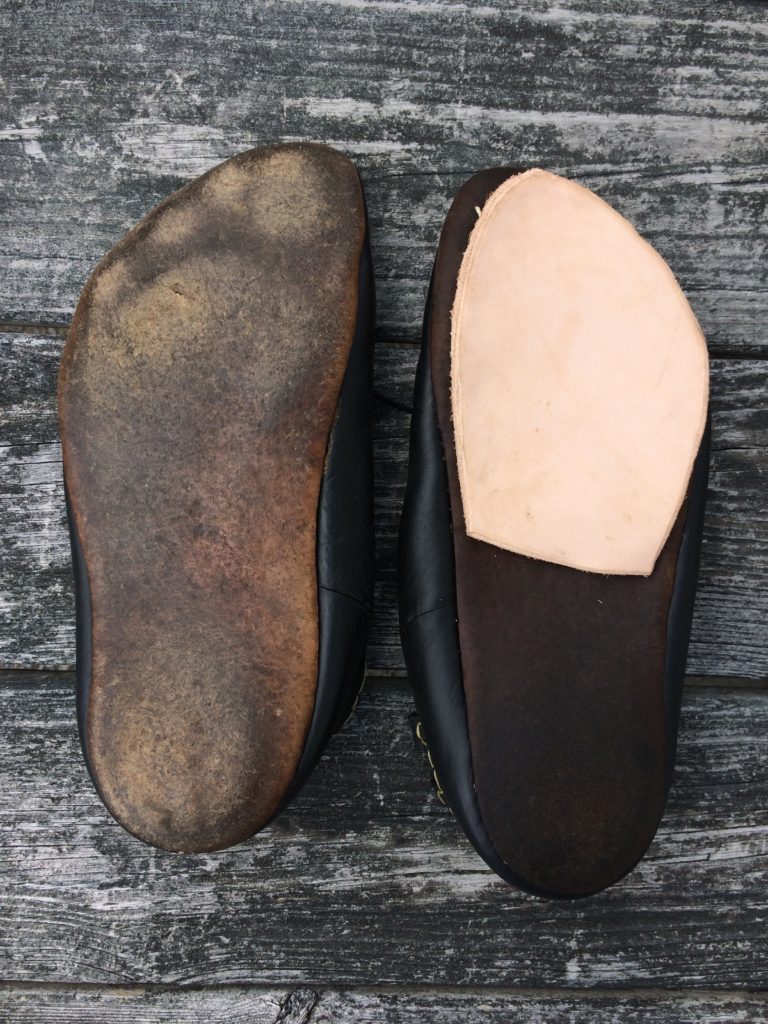Clump Change
One can repair a worn-out sole by replacing it completely: cut off the old one, stitch on a new one (using the same holes in the uppers), and re-turn it. That's easy and straightforward, if the exact size of the sole is known. An old, worn, hardened sole will be deformed, however, so attempting to trace it in new leather for its replacement is not necessarily easy. Also, much more leather is needed to replace an entire sole, when only a partial one may be needed.
Thus, the clump sole. This approach can be documented archaeologically in numerous places and times. Instead of replacing a sole, a new layer of leather is added on top of the old one, often in just the forward or rear part of the shoe, covering a worn-out area.
Clump soles do not require cutting off the old sole: indeed, the old sole is needed for attaching the clump. To make that possible, the shoe must be soaked for a half-hour or so to make the old sole soft enough to allow a needle to pass through it in a tunnel stitch.
An awl is used to make a series of tunnels in both the original sole and in the new leather, and thread is pulled through them loosely while they are being made. When all the tunnels are complete and the thread has been put through, the thread is pulled tight, clamping the new leather to the old.
Tunnel stitching is used in order to protect the thread: you don't want to walk on it, which would happen if whip-stitching the new sole to hold it in place. In theory, one could make a groove in the new sole and then pass thread up and down within it and into the old sole / rand / upper as a way of attachment. Indeed, this is more than theory: this is how later shoes' outer soles are attached to uppers.
This is my first attempt at such a repair. I have no doubt that it's rather crude, although Goubitz notes such repairs are often coarse (2007: 77). Perhaps the stitches should be smaller or closer together. The leather's difficult to work this way, though, so I'm not sure how I would do anything different. Perhaps I could make more tunnels or smaller ones, but that would take even longer and be harder to achieve. I would much prefer to simply remove the old sole and apply a new one. That might take a bit longer, but it would look a lot nicer and feel more comfortable at the end, based on my experience so far.
The clump sole adds significant weight to the shoe, and while not uncomfortable, definitely changes the feel of the shoe. Both the original sole and the clump sole are 9/10 oz. veg-tanned leather. A thinner clump would be less noticeable, but wear out faster.
Last updated August 28, 2019.
